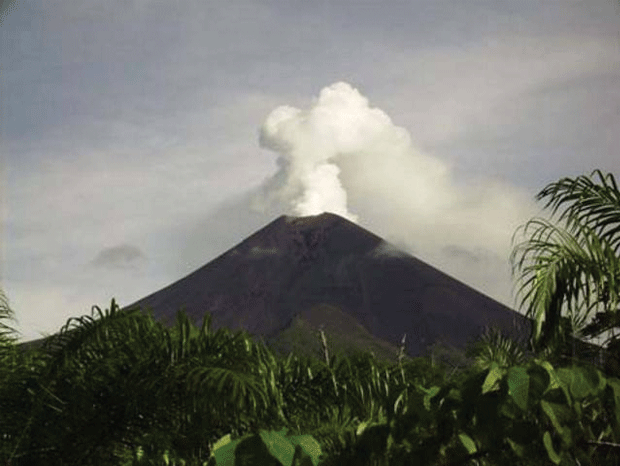|
As we live our day to day lives, we worry about
relatively domestic things such as work, taxes, the kids, and getting to
the grocery store before it closes. Volcanic eruptions are probably the
last thing on our minds. But have you read about volcanoes lately?
They're terrifying!
Huge active volcanoes (and even HUGER active supervolcanoes) exist here
in 2015...and some could erupt in our lifetime. Not only would the
initial eruption kill thousands with lava, the surrounding area would be
filled with volcanic gases. Those gases could suffocate people and
animals, as well as destroy crops. An eruption could also cause acid
rain to fall from the sky (which is also not particularly welcome). Even
organizations wanted to send in help or supplies via aircraft, they
couldn't because the ash over the sky would make it too hazardous for
the pilots.
It is truly an apocalyptic fate. Let's all take the time to talk about
how terrifying these active volcanoes are, please.
|
|
Mount Ōyama, Japan.
In 2000, Mount Ōyama erupted, producing toxic gas so severe nobody was
allowed to live on the island of Miyakejima for four years. Even now,
the people living on the repopulated island are required to carry a gas
mask at all times and an alarm is sounded when the sulfur levels become
too high. |
|
 |
|
Mt. Vesuvius, Italy.
The infamous volcano that left the city of Pompeii in ruins is still
active. Yet, it is the most densely populated volcanoes in the world
with 3,000,000 people casually sitting underneath. That's not good
considering Vesuvius has erupted several times since 79 AD and it has
been known to produce particularly explosive eruptions now called 'Plinian
eruptions', named after Pliny the Younger, the lone survivor of Pompeii. |
|

|
|
Taal Volcano, Philippines.
One of the most dangerous volcanoes in the world, it is estimated that
it has already killed a total of 6,000. It is recommended that visitors
keep a safe distance when viewing it. |
|

|
|
Yellowstone Caldera, USA.
This tranquil spot is actually a supervolcano, which is different from a
regular volcano because it produces an eruption thousands of times
larger than a regular volcano. Oh also, it's in Wyoming. Experts say
that the initial blast could kill 87,000 people instantly. The ash and
gas could greatly hurt our food supply, to the point that it's possible
we may lose all of the Western United States. |
|
 |
|
Mt. Merapi, Indonesia.
Smoke can be seen emerging from the top of this Asian horror 300 days a
year. In 2010, the volcano erupted for an entire month and the lava
caused it to shrink about 125 ft.
|
|
 |
|
Ulawun, Papua New Guinea.
The biggest fear of those who live closest to the volcano is that
because of its height, a structural collapse could easily occur, causing
a devastating eruption.
|
|
 |
|
Popocatépetl, Mexico.
Although this is the second highest peak in Mexico, it is certainly the
most dangerous. The last major eruption occurred in 1947. Since 1994,
there have been 8 minor eruptions, each of which forced the nearby
41,000 townspeople to evacuate. The last minor eruption was just this
past year. Could it be priming up for something more deadly?
|
|
 |
|
Mauna Loa, Hawaii
The lava of Mauna Loa may flow relatively slowly, but the landslides it
produces may cause intense earthquakes and megatsunamis which are just
as violent if not more so. |
|
 |
|
Mt. Nyiragongo, Congo.
This volcano is particularly dangerous because within its mouth is the
largest lake of lava in the world, causing runoff lava that can travel
at 60 miles per hour. The last time it erupted was in 2002. 147 people
died.
|
|
 |
|
Galeras, Columbia.
Its first historical eruption was in 1580, but its most recent was is
2010, forcing the evacuation of 8,000 people.
|
|
 |